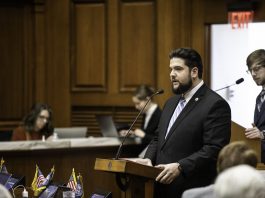It matters which counties had CAGIT, the county adjusted gross income tax. School districts receive some income tax revenue in counties that had CAGIT. Schools don’t receive LIT revenue in other counties. It matters which counties had COIT, the county option income tax. A local income tax council makes tax decisions for those counties. In other counties, the county council is the decision-maker.
The expenditure bucket under LIT that goes for public safety often is still called the public safety tax. The bucket for economic development often is still called EDIT, for economic development income tax. The official term for the general spending bucket remains “certified shares†even though the term “general expenditures†would be more descriptive.
We may use the same terms. But under the new system, counties are changing their tax rates and how they use their revenue.
Under the old system, the public safety tax had a maximum rate of 0.25 percent. Now that rate is included under an overall expenditure rate limit of 2.5 percent. (In Marion, the limit was 0.5 percent and the new maximum is 2.75 percent.) This year, 15 counties will see their public safety rates above the old maximum.
Under the old system, counties wanting to adopt a public safety tax had to adopt an income tax rate for property tax relief, too. The income tax revenue is used to give some property owners a credit against their property tax bills. The new system dropped the tax relief requirement. Two counties have eliminated LIT rates for property tax relief since 2017, and five more have reduced LIT relief rates. In each case, the lower LIT rate for property tax relief was matched with a higher rate for other LIT revenues, mostly for public safety. The share of LIT revenue used for relief has decreased.
Last year, the General Assembly passed a new LIT option. Counties can now adopt an added rate of up to two-tenths of 1 percent to be used for correctional facilities. All the revenue from this rate goes to the county government. Ten counties have adopted this new option.
In 2018, the second full year under the new system, 18 counties increased their LIT rates. The average rate rose 5 percent. The median rate – the middle value among all counties – increased from 1.5 percent in 2017 to 1.73 percent in 2018.
Maybe this larger-than-usual increase was a one-time adjustment to the new system. Maybe, though, the new system encourages counties to increase local income taxes more rapidly every year. Would 2019 show another big increase in rates and revenues, or would the rise be more modest?
The answer: Modest. The average rate rose only 2 percent; the median rate barely budged from 1.73 percent to 1.75 percent. Half of this increase was due to the 10 counties that adopted the new correctional facilities rate.
Twelve counties increased their overall LIT rates in 2019. Six increased their public safety rates, but two reduced their public safety rates while adopting the new correctional facilities rate. Three decreased their property tax relief rates and raised an expenditure rate by an equal amount. Four counties increased their general-purpose “certified share†rate. Two increased their economic development rate, but two others decreased that rate. The General Assembly authorized special-purpose rates for three more counties.
In total, though, local income tax rates increased by a relatively modest amount, and half of that increase was due to the new tax option. Perhaps the new system will not result in more rapid increases in local income taxes.
What happened in your county? Since local income taxes are paid along with state income taxes, you’ll be checking your county rate by April 15.




